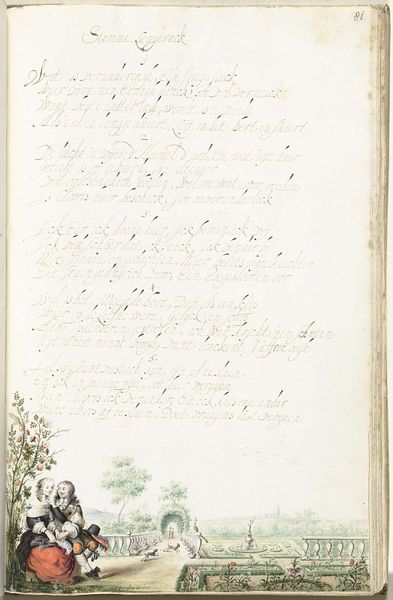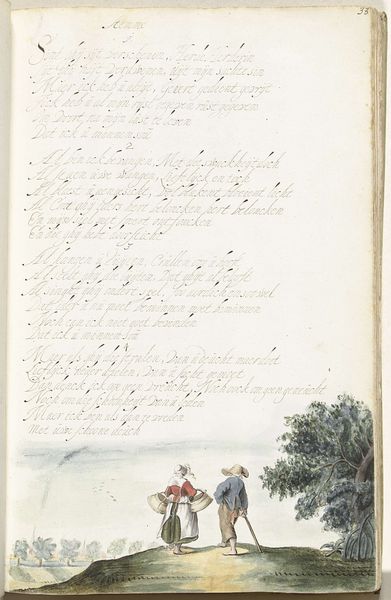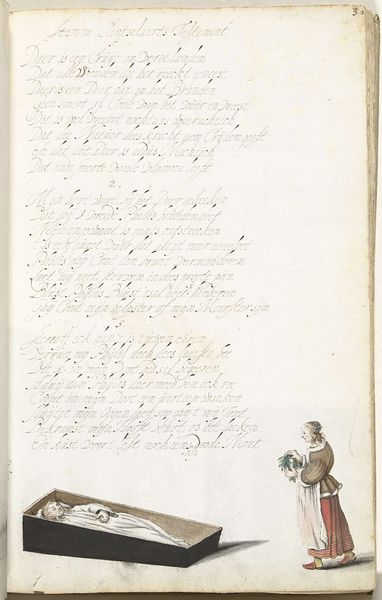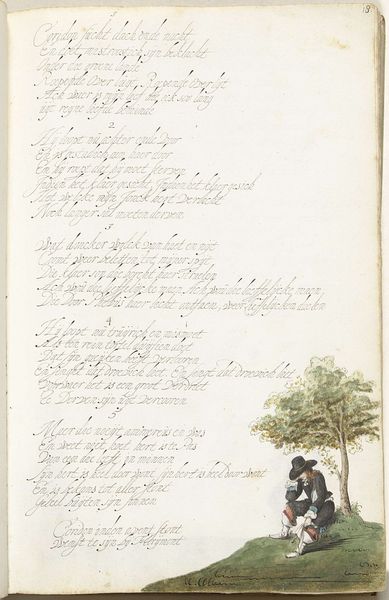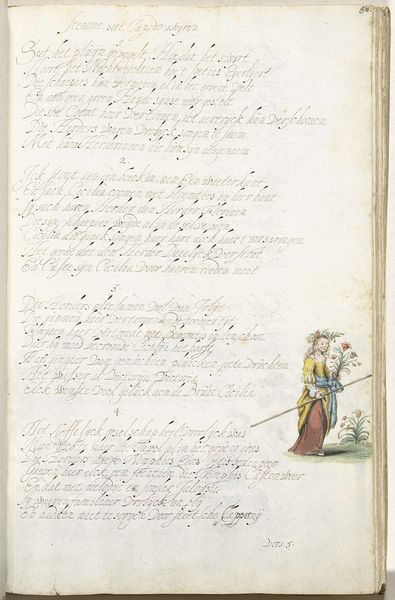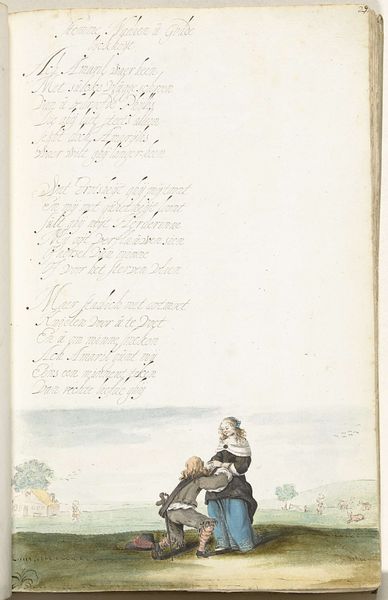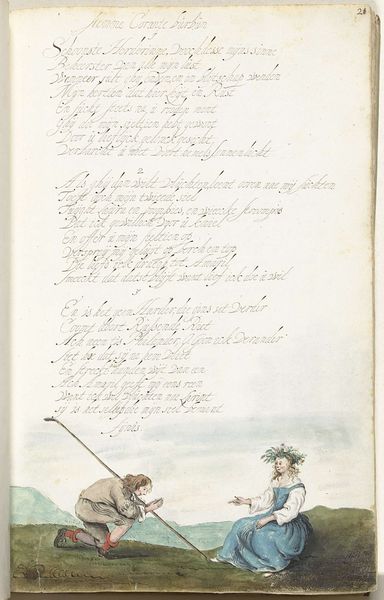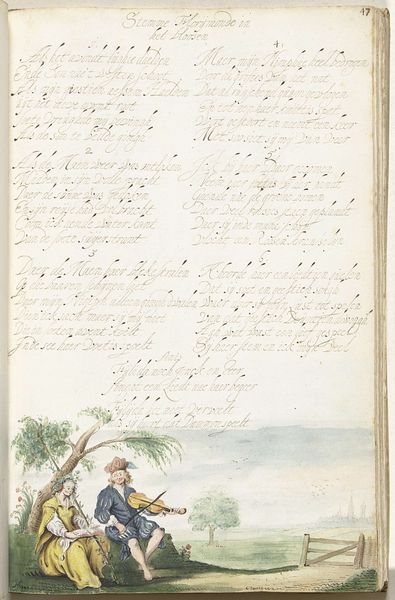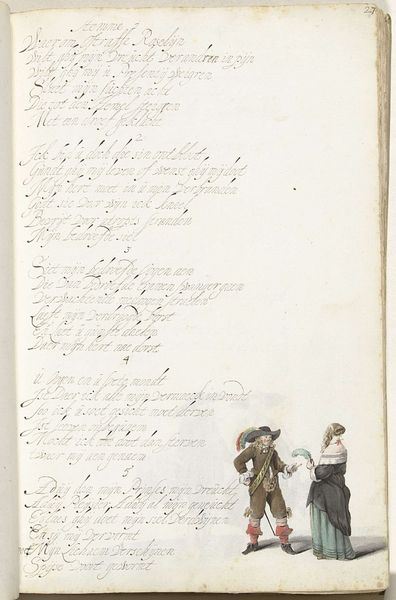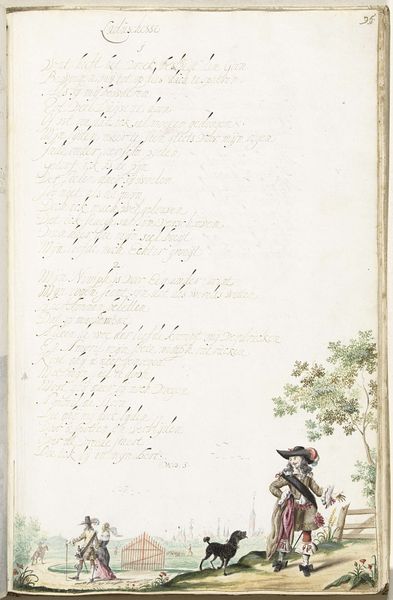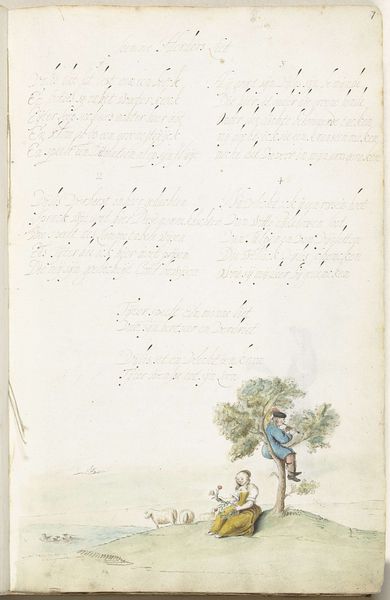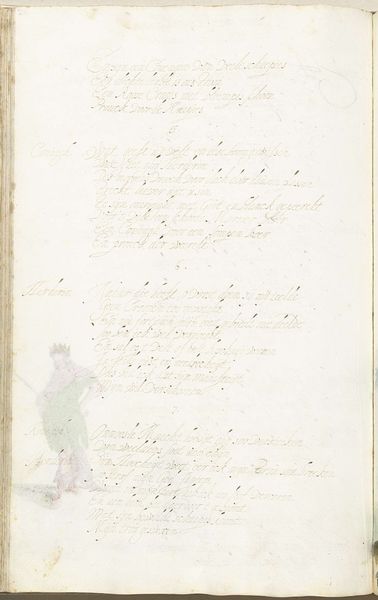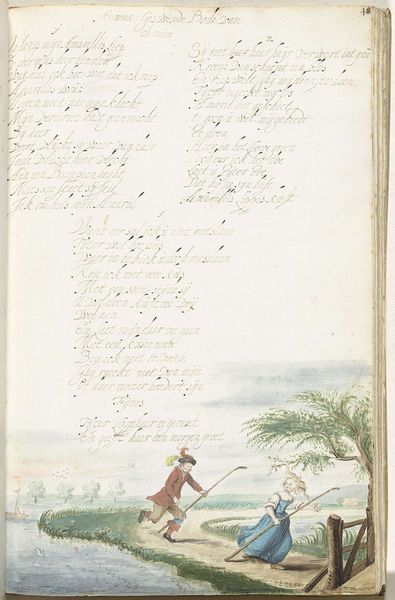
drawing, paper, watercolor
#
drawing
#
dutch-golden-age
#
landscape
#
figuration
#
paper
#
watercolor
#
watercolour illustration
#
genre-painting
#
watercolor
Dimensions: height 313 mm, width 204 mm
Copyright: Rijks Museum: Open Domain
Curator: Immediately I'm drawn to the delicacy of line and wash; a quiet scene, wouldn't you agree? Editor: We're observing "Herderin op een landweg," or "Shepherdess on a Country Road" by Gesina ter Borch, dating from about 1652-1653. The Rijksmuseum holds this intimate drawing rendered in watercolor and pen on paper. Curator: Pen on paper you say? Notice how the penwork deftly sketches the text on the upper register; calligraphic and quite lovely. Below we've the subtle gradients of the watercolor evoking gentle undulations within the landscape. Editor: Yes, this drawing appears within what was once a family album—a so-called "Friendship Book"—of drawings and poetry. It presents, on one level, a clear representation of the countryside. Yet it speaks volumes about Dutch Golden Age ideals as well. Landscape, carefully managed, and a woman, calmly overseeing her flock... Curator: Precisely, "calmly" is spot-on. Consider the diagonal created by the shepherdess's staff which leads our eye across the gently winding path and the trees—reiterated within the handwritten lines above. What do these structural components suggest about Ter Borch's worldview? Editor: I interpret her positioning of the shepherdess near the border of the book, along with the distant city's placement, as being more about constructing a pictorial commentary on controlled, yet productive, terrain. This symbolizes the broader ambitions of the Dutch Republic, in addition to suggesting new societal roles for women of her social class. Curator: I agree entirely. Ter Borch harnesses not only visual skills but linguistic capacity too. The placement of verse with landscape indicates considerable intelligence at play; these were not mere decorative skills as women artists were often assigned. Editor: Ter Borch occupied a rather unusual place amongst female artists of the era; with the rest of her family enjoying roles in artistic and intellectual circles, that's reflected directly here. She wasn’t afraid to present subtle, radical statements regarding landscape or female capability for the era. Curator: A stunning marriage of intellect, artistry, and nuance which we could spend hours deciphering... Editor: Absolutely, Gesina ter Borch gives us much food for thought concerning both Golden Age technique and early modern history.
Comments
No comments
Be the first to comment and join the conversation on the ultimate creative platform.
